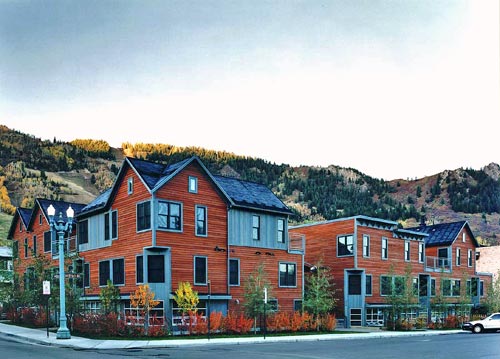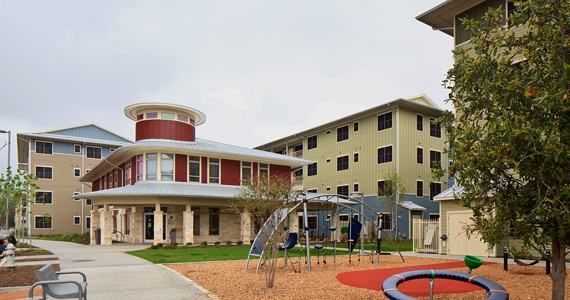Educating elected officials about housing diversity focuses on creating easy-to-read marketing materials that give local officials information about the types of housing available in their area, identifies housing gaps and needs, and methods to finance new housing construction in an effort to streamline the approval and permitting process for new developments.
Why is this important to your community?
Although construction of single family housing in the communities within the CONNECT region started to rise following the economic downturn, there were still 282,624 households with unmet housing needs in 2010. Of these households, 74% earned 80% or less of the Area Median Income (AMI, and others find that the type of housing they want is simply not available in their area. Among comments heard during CONNECT’s engagement processes were a desire for a mix of housing types in an area, so that family members with different housing needs could live near each other; a desire for workforce appropriate housing for young members of the workforce such as teachers, young entrepreneurs and professionals, etc. in smaller communities; and a desire for higher-market rate new single-level construction for residents with health issues, rather than only two-story homes. As the region continues to grow in the coming decades with an increase in the senior, young adult, and Latino populations, local officials and private sector partners can work together to ensure that residents have access to a diverse range of workforce housing options. By creating a guide to housing diversity, local communities can ensure that their officials, as well as local residents, developers, and housing builders, are knowledgeable about current financing options, housing types, and housing needs at all price points for people of all ages. These resources can help the local officials make informed policy decisions which could translate into a streamlined approval and permitting process for different types of housing projects.
Skip directly to
How Does It Work?
Resources
Using the Tool
Partners
Where Has It Worked?
Where is it appropriate to use?
What priorities does it address?
What other tools are related?
- Newcomer Community Resource Guide
- Establishing Appropriate Residential Densities
- Infill Development
- Land Use Modeling
- Mixed Use Development and Design Guidelines
- Public Private Partnerships
- Adaptive Reuse of Buildings
How does it work?
Local officials, including Zoning and Planning Departments, have direct contact with owners and developers interested in redeveloping a particular site. Providing updated educational materials about the current state of housing in the area, new housing types, relevant regulations and goals, and identified housing needs, allows for a smoother approvals process. Officials can then provide owners and developers with accurate information about incentives and programs and explain the variety of housing types allowed on an individual property. This is an opportunity for a municipality to address the full range of housing needs and promote community-wide goals related to development, density, and housing to attract a workforce. Ensuring that officials and developers are knowledgeable about incentives, housing needs and regulations helps the project stay organized and on-schedule, and helps communities obtain the kind of housing they need to serve current residents and attract future residents.
Resources
- Affordable Housing: A Guide for Local Officials
- Affordable Housing Techniques: A Primer for Local Government Officials
- Developing Quality Affordable Housing: Educating Permitting Officials – Puget Sound Regional Council
- America in 2013: Key Findings on Housing, Community, Transportation and the Generations (ULI)
- Housing America’s Older Adults – Meeting the Needs of an Aging Population (Joint Center for Housing Studies of Harvard University)
- America’s Rental Housing – Evolving Markets and Needs (Joint Center for Housing Studies of Harvard University)
- The Implications of Changing U.S. Demographics for Housing Choice and Location in Cities (Brookings)
- Residential Futures II: Thought-Provoking Ideas on What’s Next for Multigenerational Housing and Intergenerational Communities (ULI)
- Housing America’s Workforce: Case Studies and Lessons from the Experts (ULI)
- Generation Y: America’s New Housing Wave (ULI)
- Housing in America: The Baby Boomers Turn 65 (ULI)
Ready to get started?
Using the Tool
- Meet with representatives from government departments related to housing regulations, building, and permitting to discuss streamlining the approvals process and promoting the local housing goals through an educational handbook.
- Create an outline for an official’s housing handbook. Consider current housing needs (using your community’s community-based housing strategy), existing housing stock, regulations, and financial incentives.
- Gather appropriate data. Consult existing comprehensive and neighborhood plans and assess existing goals. If the area’s community-based housing strategy is outdated, consider conducting a new needs assessment to better understand existing housing gaps and needs.
- Solicit input from local developers, architects, and builders to determine what improvements should be made to the current approvals process and what information would be useful to have while preparing applications for development (e.g., financing, best practices for affordable housing development, and additional resources).
- It may be useful to enlist the input from other departments (e.g., transportation, utilities, etc.) to provide officials with an overall picture of how housing works within the larger municipal system.
- Consider how the local guide will be distributed and updated – either as a printed guide or an online resource.
- Ensure that local officials are well-versed in the material within the guide. Consider hosting webinars or continuing education speaker series where officials can gain knowledge about new housing trends and methods for financing. This could include partnerships with architecture or development departments at local colleges or universities.
- Regularly monitor housing trends, housing needs defined in the community, and current housing stock. Work with community development / housing staff and officials to define and address potential barriers in codes or permitting that may negatively impact housing diversity.
Partners
- Advocacy Groups
- Architects
Where has it worked?
Affordable Housing: A Guide for Local Officials - Colorado
 Image Source: Harry Teague Architects.
Image Source: Harry Teague Architects.
Contact
Pat Coyle
Director
Colorado Division of Housing
housing.helpdesk@state.co.us
303-864-7810About the Program
The Colorado Department of Local Affairs – Division of Housing created a guide to affordable housing for local officials in 2007 designed to provide officials with information about policies and regulations that impact housing development and demand. The guidebook provides basic information about the role of local government in housing markets, methods for understanding local housing markets and assessing gaps, potential tools that can be by officials to increase the availability of affordable housing, and additional resources.
Why it works
The guide gives officials a snapshot view of state-specific issues, programs, and solutions for addressing housing needs in communities throughout Colorado. This includes a step-by-step guide to conducting a Housing Needs Assessment, forming partnerships with developers and builders, reducing regulatory barriers to streamline the permitting and approvals process, and working with residents to design equitable and well-designed neighborhoods. A variety of successful affordable housing projects have been completed in the state since the distribution of the local officials’ guide.
http://www.town.ridgway.co.us/regional_housing_authority/resources/GuideForLocal07.pdf
S.M.A.R.T Housing™ Policy - Austin, TX
About the Program
The City of Austin passed the S.M.A.R.T Housing™ Policy in 2000 in response to a shortage of moderately-priced, accessible housing. S.M.A.R.T stands for Safe, Mixed Income, Accessible, Reasonably Priced, and Transit Oriented housing. The program encourages the construction of housing that meets the needs of low-to-moderate income families, seniors, persons with disabilities, students, and young professionals by offering fee waivers and expedited development review to developers and builders who qualify. The City’s Department of Neighborhood Housing and Community Development released the S.M.A.R.T Housing™ Policy Resource Guide in 2008 to educate residents and guide developers through the planning process. The guide gives an overview of the program, certification standards for each requirement under the S.M.A.R.T Housing™ Policy (e.g., 10% of all multi-family units must be accessible, the front door of any first-story unit must be served by a ramp or no-step entrance, developments must have a bus route located within ¼ mile of the development), benefits for builders, development process diagrams, and details about complimentary policies and initiatives.
Why it works
The program provides benefits to both developers and residents. Developers who opt into the voluntary program receive incentives and a clear and consistent development process while residents benefit from the construction of safe, visitable, affordable, energy efficient housing near convenient transportation options. The program successfully helped to build more than 1,000 units in its first year and more than 10,000 units in the first eight years. As the program continues into its 14th year and demographics around the nation and in Austin shift, updates to the policy are being considered and include greater emphasis on transit oriented development and compatibility with the Image Austin Comprehensive Plan.
http://www.mayorsinnovation.org/images/uploads/pdf/13_-_Austin_housing.pdf
https://www.lakecountyfl.gov/pdfs/2025/SMART_Housing.pdf
http://www.soa.utexas.edu/files/csd/CSD_SMART_Housing_Report.pdf
http://www.austinchronicle.com/news/2014-04-18/then-theres-this-smart-is-as-smart-does/
- Architects
- Establishing Appropriate Residential Densities



